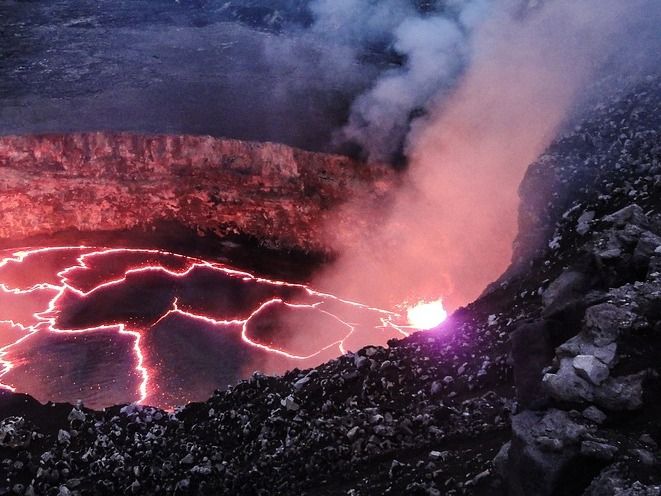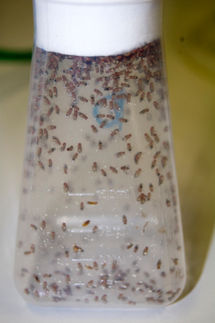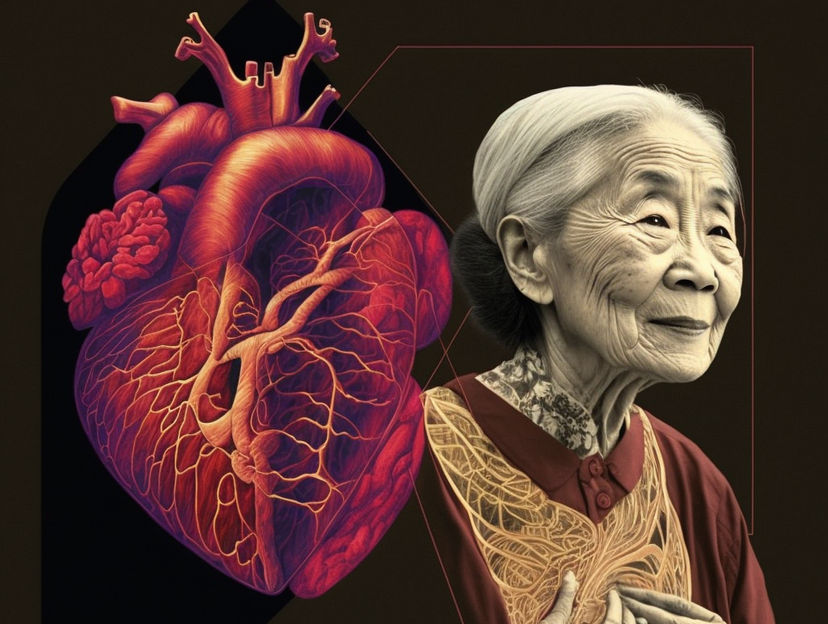A plausible recipe for early life on Earth
Chemists at The Scripps Research Institute (TSRI) have developed a fascinating new theory for how life on Earth may have begun.

skeeze; pixabay.com; CC0
Their experiments demonstrate that key chemical reactions that support life today could have been carried out with ingredients likely present on the planet four billion years ago.
"This was a black box for us," said Ramanarayanan Krishnamurthy, PhD, associate professor of chemistry at TSRI and senior author of the new study. "But if you focus on the chemistry, the questions of origins of life become less daunting."
For the new study, Krishnamurthy and his coauthors, who are all members of the National Science Foundation/National Aeronautics and Space Administration Center for Chemical Evolution, focused on a series of chemical reactions that make up what researchers refer to as the citric acid cycle.
Every aerobic organism, from flamingoes to fungi, relies on the citric acid cycle to release stored energy in cells. In previous studies, researchers imagined early life using the same molecules for the citric acid cycle as life uses today. The problem with that approach, Krishnamurthy explains, is that these biological molecules are fragile and the chemical reactions used in the cycle would not have existed in the first billion years of Earth--the ingredients simply didn't exist yet.
Leaders of the new study started with the chemical reactions first. They wrote the recipe and then determined which molecules present on early Earth could have worked as ingredients.
The new study outlines how two non-biological cycles--called the HKG cycle and the malonate cycle--could have come together to kick-start a crude version of the citric acid cycle. The two cycles use reactions that perform the same fundamental chemistry of a-ketoacids and b-ketoacids as in the citric acid cycle. These shared reactions include aldol additions, which bring new source molecules into the cycles, as well as beta and oxidative decarboxylations, which release the molecules as carbon dioxide (CO2).
As they ran these reactions, the researchers found they could produce amino acids in addition to CO2, which are also the end products of the citric acid cycle. The researchers think that as biological molecules like enzymes became available, they could have led to the replacement of non-biological molecules in these fundamental reactions to make them more elaborate and efficient.
"The chemistry could have stayed the same over time, it was just the nature of the molecules that changed," says Krishnamurthy. "The molecules evolved to be more complicated over time based on what biology needed."
"Modern metabolism has a precursor, a template, that was non-biological," adds Greg Springsteen, PhD, first author of the new study and associate professor of chemistry at Furman University.
Making these reactions even more plausible is the fact that at the center of these reactions is a molecule called glyoxylate, which studies show could have been available on early Earth and is part of the citric acid cycle today (called the "Glyoxylate shunt or cycle").
Krishnamurthy says more research needs to be done to see how these chemical reactions could have become as sustainable as the citric acid cycle is today.
























































